Elaine de Kooning Paints a Picture
The selected writings of a cherished Abstract Expressionist painter made a firm mark on the history of art.
❥ This email may be truncated in your inbox. To be sure you are reading the entire post, please move yourself along to a web browser!
More from me + Absolument can be found in these places: Website | Instagram | Book Recs
Merci, thank you tons and tons for reading!
While talking about book recommendations, I’ll tell anyone and everyone who listens about Ninth Street Women, a 900+ paged, highlighter-yellow tome dedicated to telling the story of five modern painters. It’s the beginning-to-end, no-corners-unexamined biography of Elaine de Kooning, Helen Frankenthaler, Lee Krasner, Grace Hartigan, and Joan Mitchell. It spurred my now years-long obsession with reading mostly auto- and biographical novels about designers, architects, writers, and artists of a certain era. It’s one of the first ways anyone finds out that I love the past a little too ferociously: “What do you do for fun?” “Oh, I like to read about dead artists.” Okay, I never say it so dramatically, but people connect the dots quickly: the things trapped in my brain are rarely contemporary.
Even before Ninth Street Women, almost fifteen years ago, I was an art history undergrad student visiting my then-partner who lived in New York City. One visit, I practically demanded we go to MoMA because 1) it’s MoMA and 2) there was a Willem de Kooning retrospective up. The first-ever major retrospective of his work!! Pictures weren’t allowed in the exhibition, but I found every creative way to hide the click of my film camera from the guards. Some pictures were clear, and others were as distorted as the paintings in the show.* After, we bought paint and a board from The Most Beautiful Home Depot in the World™️ and made our own abstract expressionist-inspired work on the floor of his JMZ train-touching Brooklyn loft.
That day, Willem de Kooning quickly jumped up a few places on the roster of artists who I loved. Elaine, his wife, left an imprint on me too. For me, her impression has been even more enduring—it’s a force that won’t be fading.
*I’m not sure why I didn’t upload the de Kooning photographs to my Flickr in 2011, but I remember them so clearly in my mind’s eye!! I included a few of the film photographs from that trip at the bottom of this post as a love letter to 2011-era MoMA. A version of New York City that is cemented in my memories.
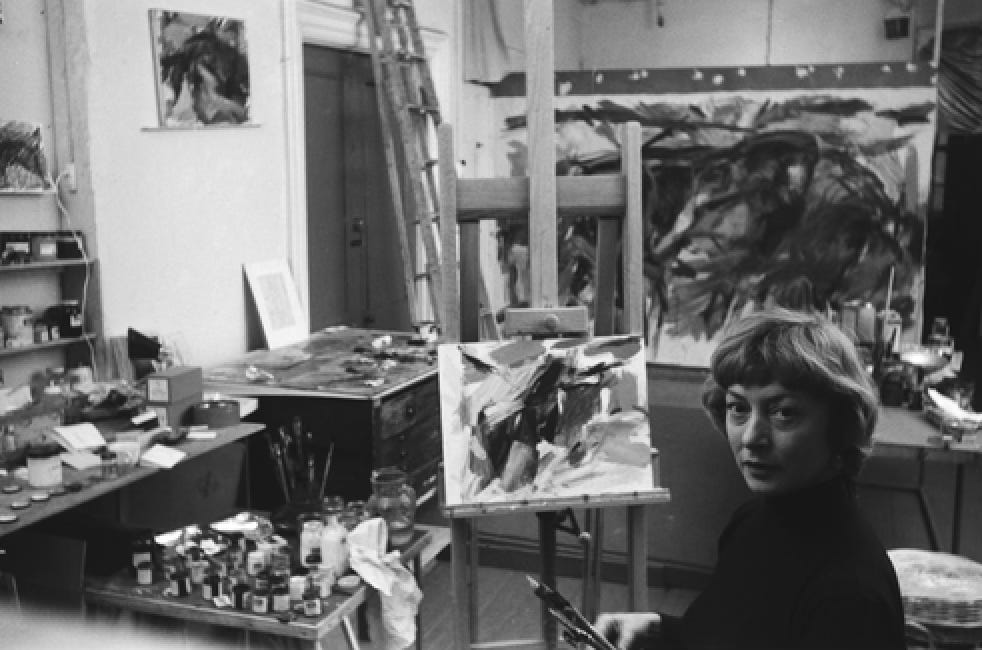
The Spirit of Abstract Expressionism: Selected Writings of Elaine de Kooning was one of a very few items on my Christmas wishlist last December. I was lucky that my parents-in-law gifted it to me. I devoured it as slowly as possible over the course of January. I forced myself to take breaks only so that I could stretch out the experience a little while longer.
What a tremendously talented writer Elaine was! She was perceptive and astute; sensitive and truthful; and deep in the trenches of the movement as a founding Abstract Expressionist artist herself. She read the art movement’s pulses and picked out the glaring talent, buffing up the artists and their works so that they were gleaming during her public exposure of them.
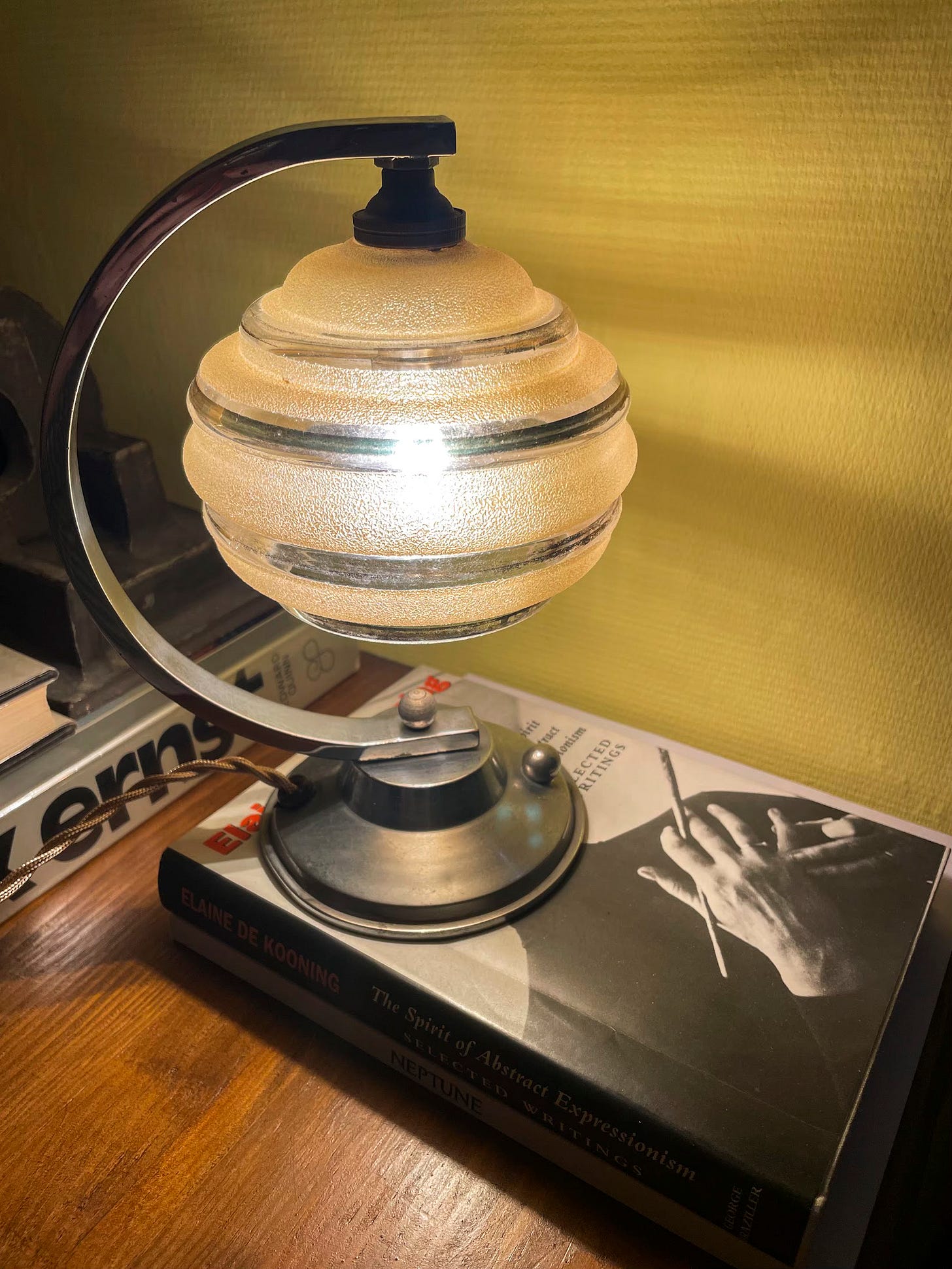
Here are some of her writing excerpts, which will give you a perfect idea of how these artists existed and the ways they turned the verb painting into a noun: a painting. Into paintings for all of us to still enjoy—or not!
About herself, and the influence of historic cave paintings on an era of her work:
“Prehistoric art was secret—hidden way deep as though they didn’t want you to find it. The first two caves we visited—Niaux and Bedheilac—were vast cathedral spaces and we had to walk, it seemed for miles, before we arrived at the first images. The cave walls with their splotches of red and ochre or gleaming white calcium deposites, their rolling turbulent forms and intricate cracks and crevices seemed to be teeming with animals before I saw my first actual prehistoric drawing. When I did see it, a crude and powerful bison, I was overwhelmed by its unexpected immediacy. . .
I felt a tremendous identification with those Paleolithic artists. I found myself deep in the caves imagining that I was one of them, looking for surfaces smooth enough to paint on, noticing chunk of yellow clay on the ground that would be perfect to draw with. How alive their animals must have looked to them in the flickering dim light of their torches. And I loved their high-handed way with scale, juxtaposing huge and tiny creatures, with fragmented images—and always, always in profile.”

On Buckminster Fuller:
“R. Buckminster Fuller is a phenomenon four years older than the twentieth century, and the century so far seems to be having trouble catching up to his lead.”
- Dymaxion Artist, 1952
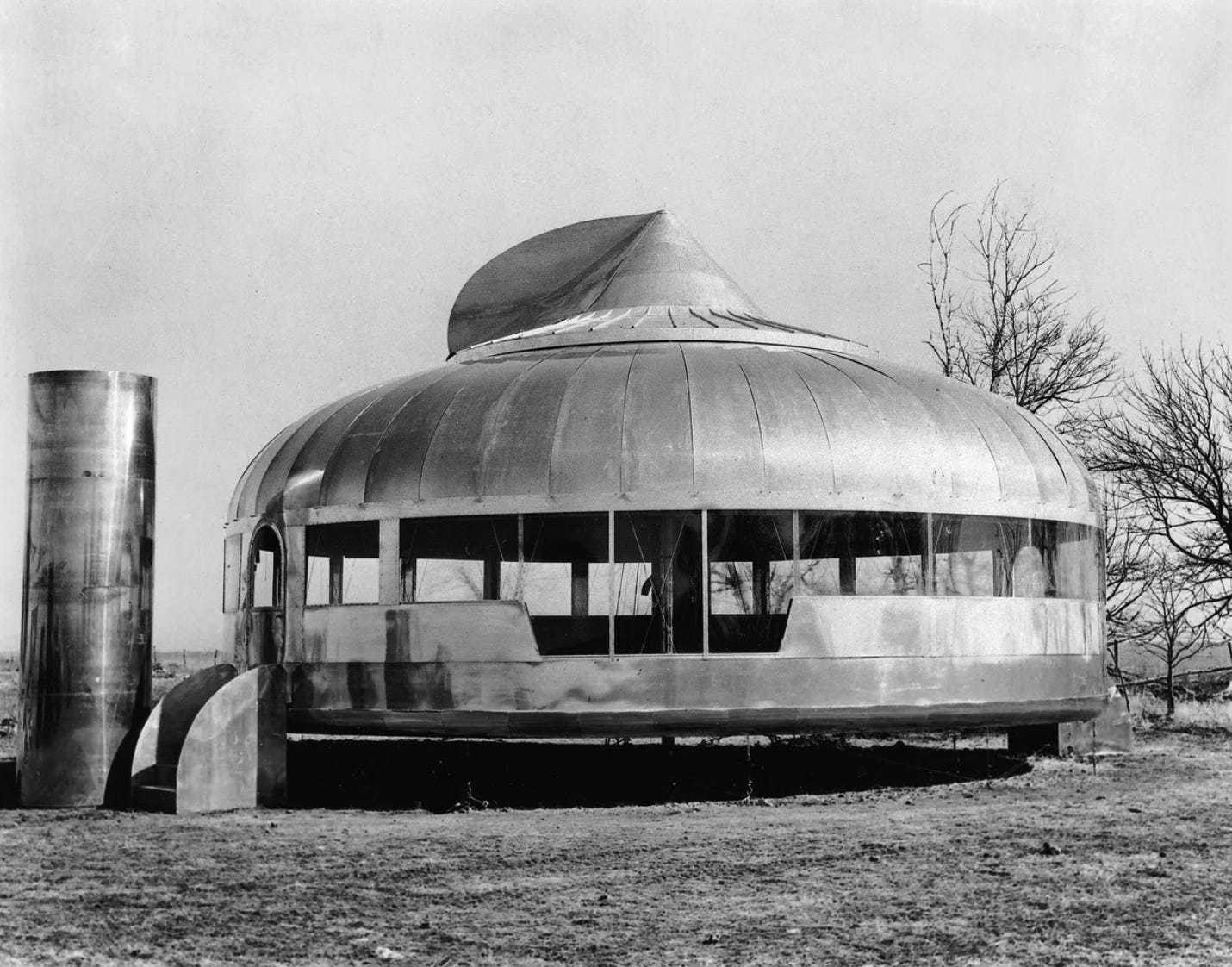
“The shimmering pale blue expanse of Bucky’s eyes—immensely magnified behind his thick glasses—has us all mesmerized. They were, to us, the eyes of a visionary, a saint, all-comprehending, all-forgiving. We loved him and we hung on his every word. In turn, Bucky was wonderfully responsive, free with his praise, totally absorbed in each of us as he directed his fabulous gaze from face to face.”
- de Kooning Memories, 1983
On Josef Albers:
“Holding a tube of pigment in one hand and a palette knife in the other, Josef Albers finished his Homage to the Square in five hours. Evenly painted in grey, black, and white, the severe, anonymous construction of this picture does not seem to demand a virtuoso touch, and the artist insists that ‘someone else could have executed it.’ But the aseptic, almost militant simplicity of each of Albers’ designs is the result of a long series of rejections—an arduous and complicated exercise of the element of choice. It is not surprising, therefore, that the artist tends to describe his technique in terms of what he renounces: ‘no smock, no skylight, no studio, no palette, no easel, no brushes, no medium, no canvas.’ (He works on a table in any room handy, and can keep a white linen suit immaculate throughout a painting session.) And, continuing to list his rejections in terms of style, he says, ‘no variation in texture, or matière, no personal handwriting, no stylization, no tricks, no twinkling of the eyes.’”
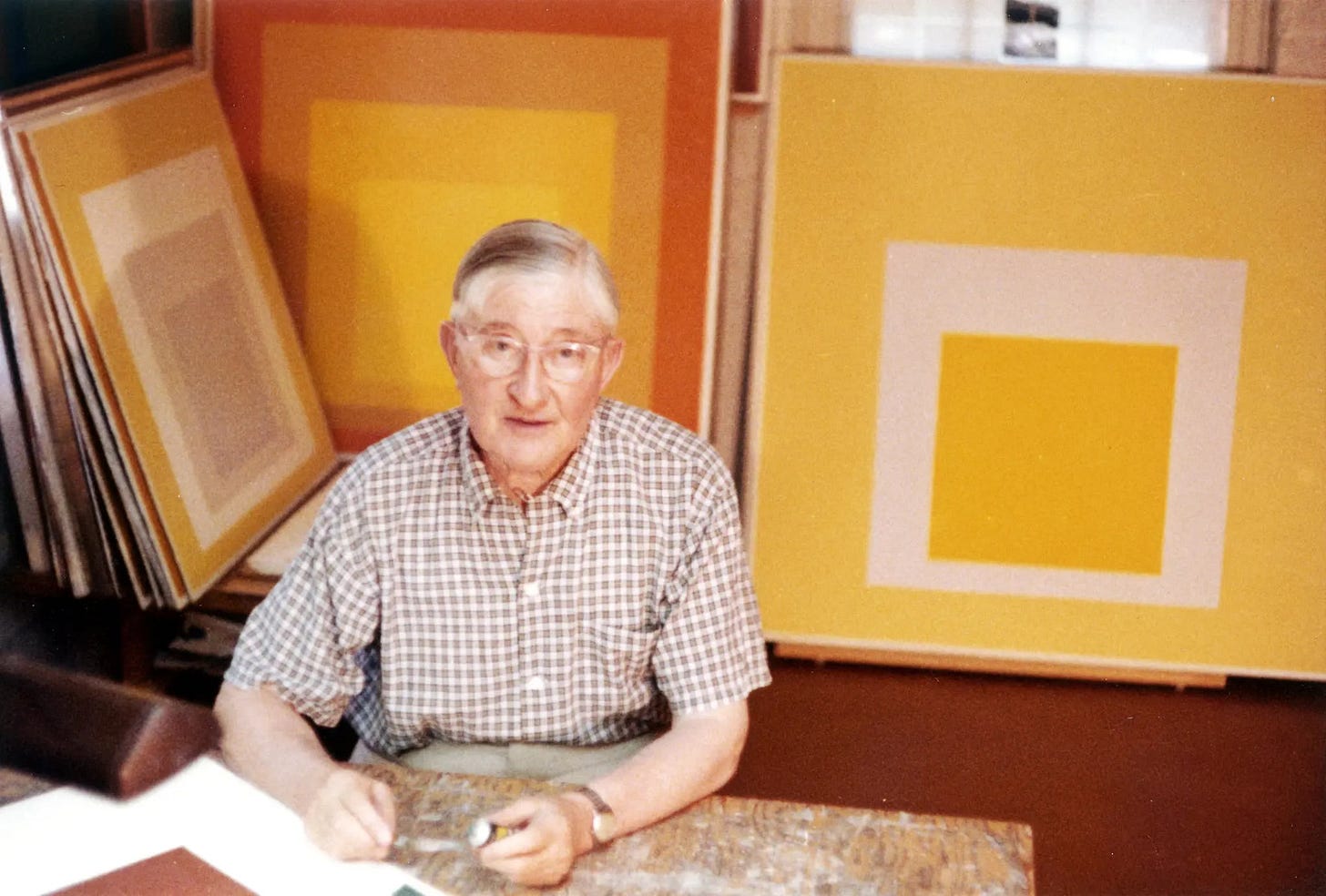
“‘I want,’ he concludes, ‘to make my work as neutral as possible.’ And so each color and form in his work is clearly circumscribed, measurable and describable (the artist lists them in his spectacularly tiny handwriting on the back of each board). But the complex moral issues and attitudes toward society—the puritanical conviction—that a susceptible observer might find in the total effect of any one of his pictures, could not be so easily accounted for. This extra dimension is precisely intended; as Albers says: ‘The concern of the artist is with the discrepancy between physical fact and psychological effect.’”
- Josef Albers Paints a Picture, 1950
On Jackson Pollock:
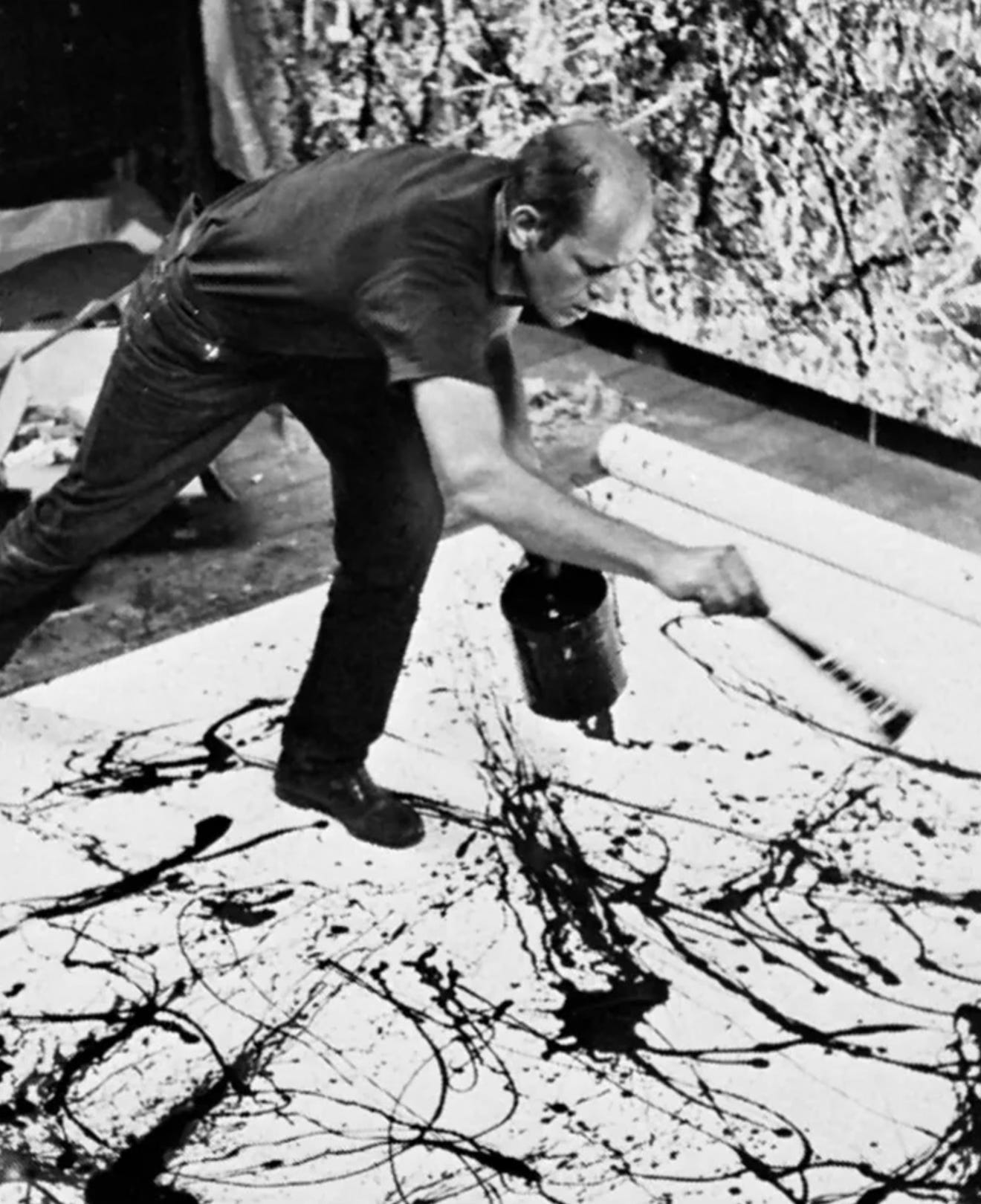
“Jackson Pollock raises all sorts of questions—the relation of the artist to his public image, to psychoanalysis, to his self-image, to critics and collectors, to words, to booze, to success, and to the present that was his future. Today’s situation in art was foreshadowed by Pollock’s conflicts.
Pollock’s fierce, twinkling bull eyes and great shoulders are there in his work. Some artists’ faces are embedded in their work in this way, as a kind of personal resonance, others not. . . Pollock’s vivid personality invited recognition before his painting did.”
- Jackson Pollock: An Artist’s Symposium, 1967
On Arshile Gorky:
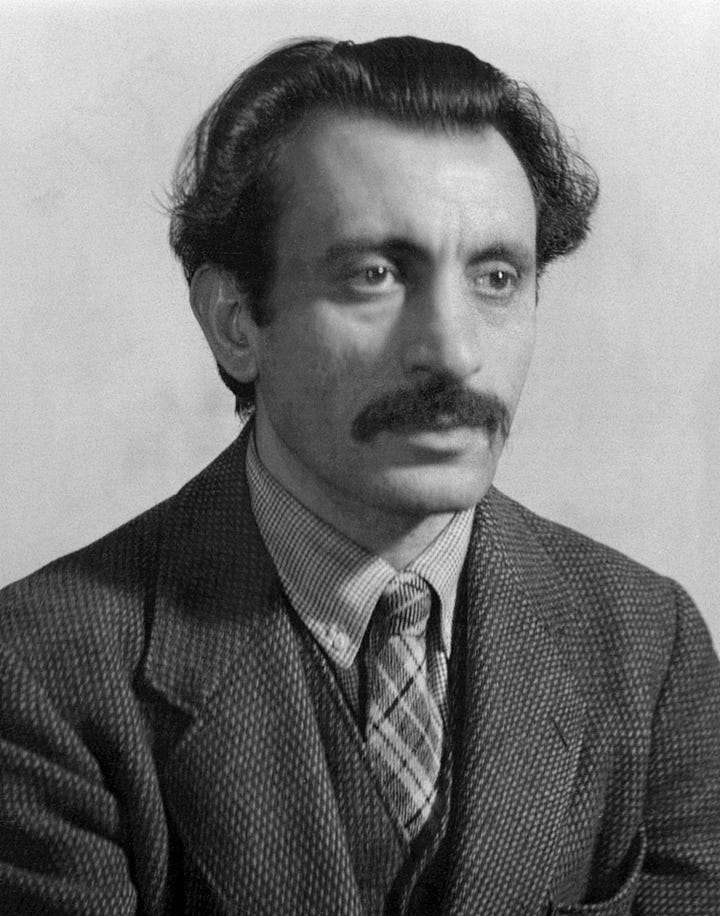
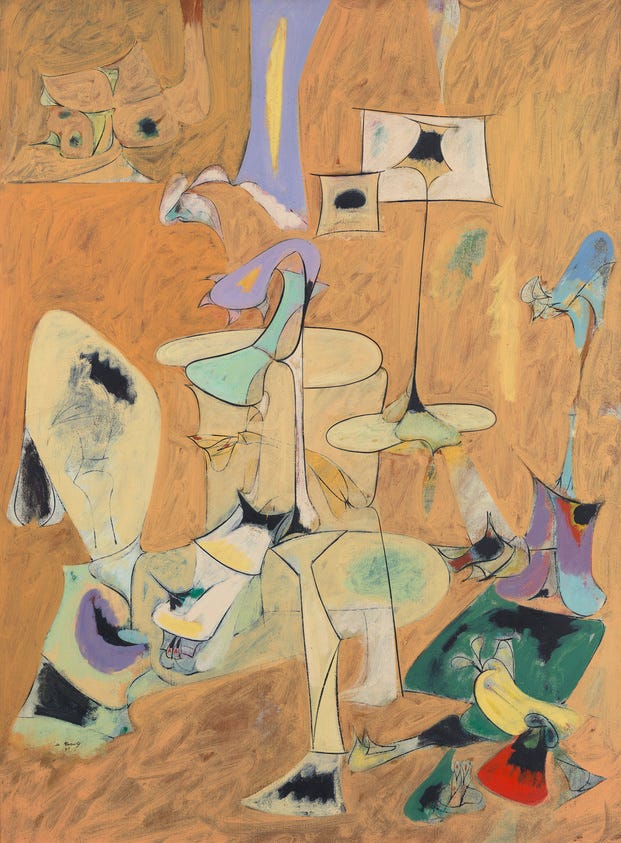
“No matter how he directed his forms, they float upward with an extraordinary buoyancy. Poignantly graceful, Gorky’s gardens at first flutter with a light and witty loquacity, but, in an overpowering flux of successive and simultaneous images, forms change, as you look, into a cruel and opulent sexual imagery. Accents of bright color suddenly lose their meaning as flowers and become crevices, imparting a strange, voluptuous meaning to the surrouding pale, thinly washed surfaces.”
- Gorky: Painter of His Own Legend, 1951
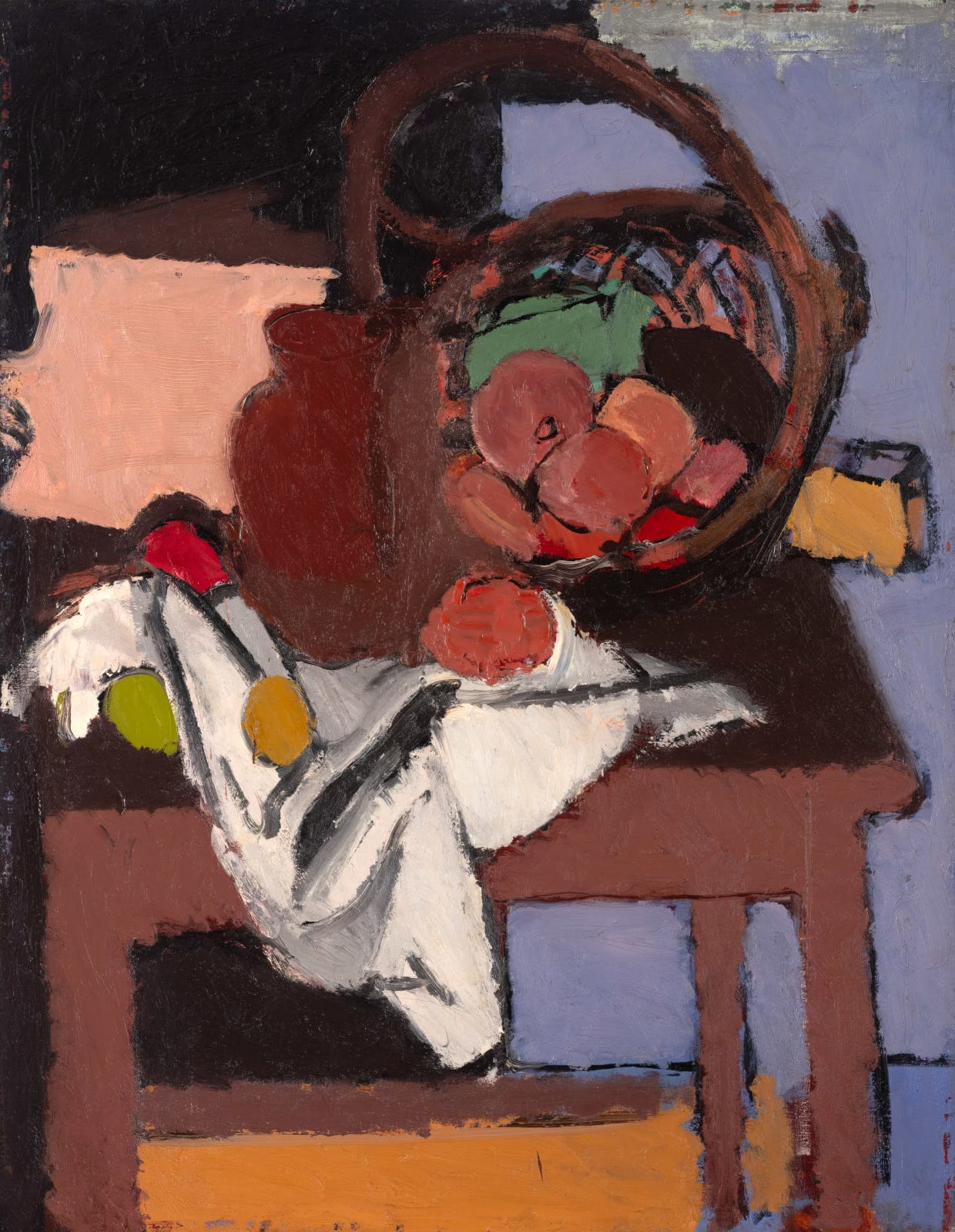
(I have a writing draft on called: I Have a Crush on Arshile Gorky. Coming soon—subscribe below to see it!)
On David Smith:
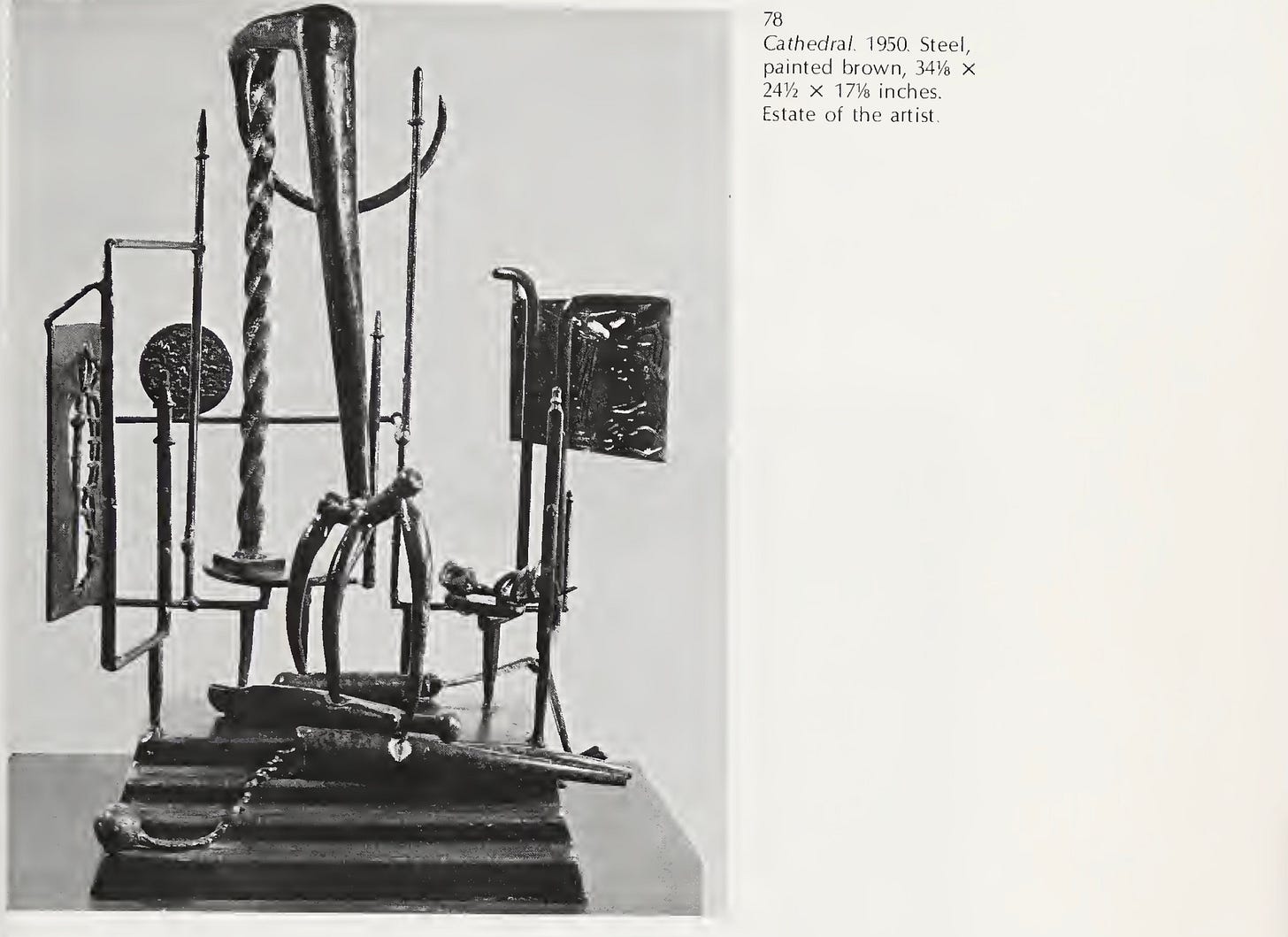
“Finished, The Cathedral seems to expand through its own atmospheric haze as a historical edifice, bigger than life, undetailed and unapproachable, taking on as part of itself the surrounding air and countryside.”
- David Smith Makes a Sculpture, 1951
On Jeanne Reynal:
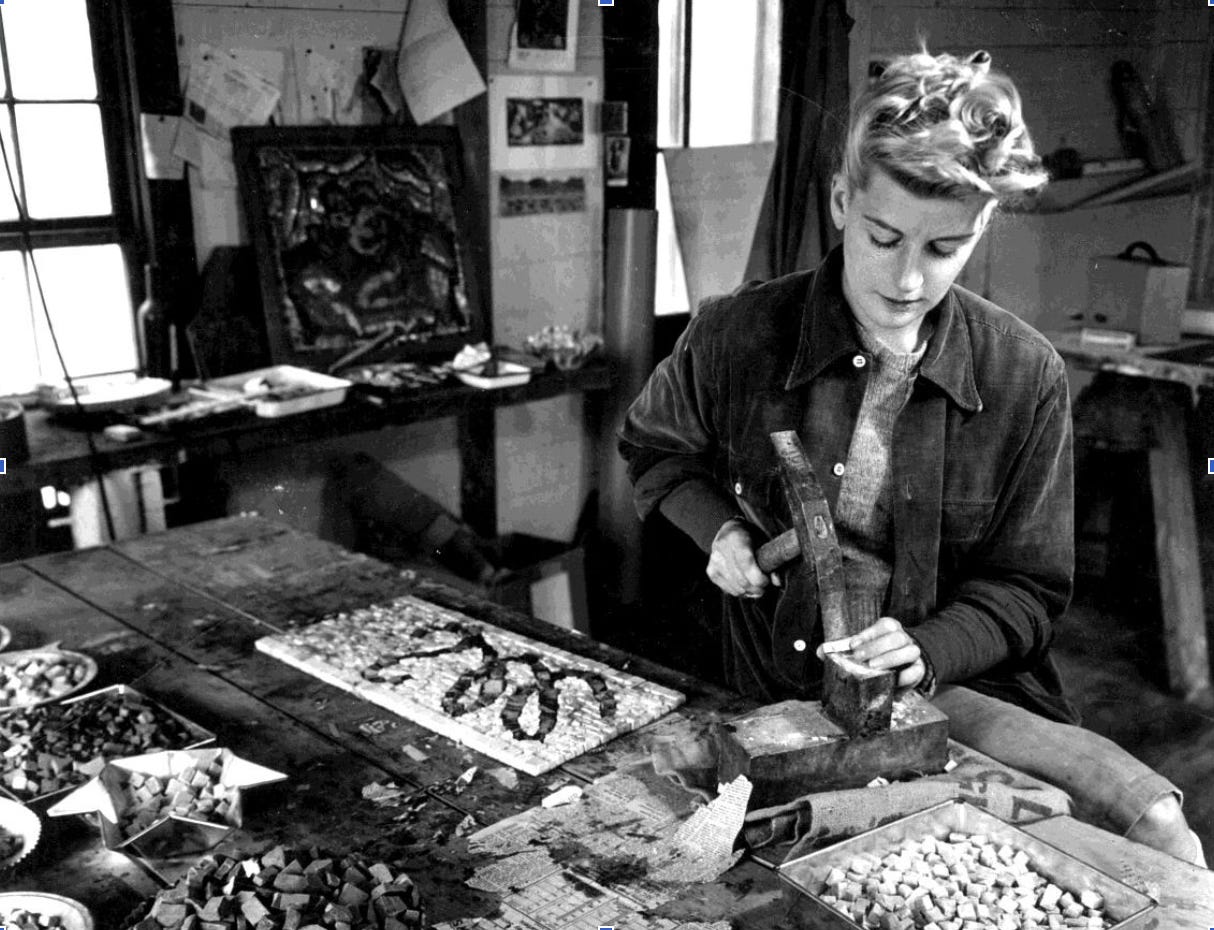
“Wandering through some Hopi Indian ruins in Arizona, she came across quantities or obsidian, a black, volcanic glass used by the Indians for arrow- and spearheads, and she was able to fill a carton with enough to last for years. She found flakes of chert, a reddish, soapy-looking flint, on a visit to Mexico; pumice on a beach in California; colored pebbles at Jones Beach.
Working with these materials more or less as she finds them, she creates an art closely involved with the look of certain aspects of the earth. Unlike the painter’s pigments, which are ground and mixed until all visible connection with their source vanishes, Miss Reynal’s stones and minerals constantly thrust their origins upon you. Terrain is suggested not only by the rough, natural presence of her inlays, but also her treatment of the bed of magnesite in which they are set. Sometimes her mosaics evoke a kind of no man’s land where the topsoil is gone and no vegetation exists—where minerals push their way to the surface in acid-bright colors, fierce tints of clay, rock, and mud baked by the sun—a brilliant, ravaged earth pitted with craters, scored with dried-up river-beds, contorted with rock formations. And yet, these visions are mysteriously opulent. Her expanses of desert country somehow evade bleakness. As one peers into these landscapes, treasures are uncovered in dim recesses which unexpectedly yield the gleam of precious stones, or flat, sandy washouts suddenly catch the light and come to glittering life. This is the geography of anxiety turned to paranoiac hope—the nightmare becoming a dream of pleasure.
As in dreams, the quality of timelessness pervades. It would take centuries to change a contour here.”
- Reynal Makes a Mosaic, 1953 (My note: ah, she was stealing art material from native land!!! I don’t excuse her behavior!!)
On Renoir:
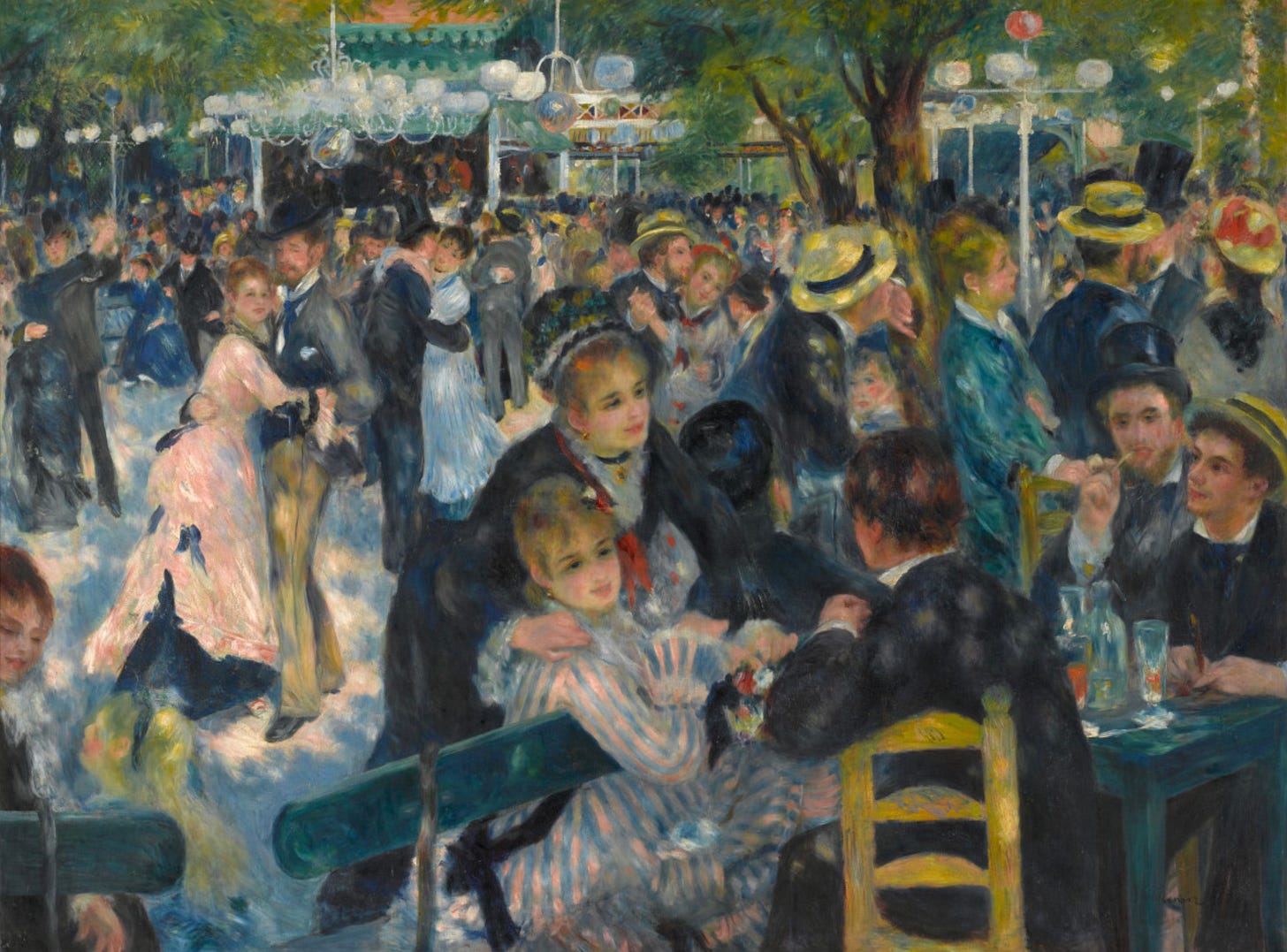
“There are two images the spectator gets from every work of art: one while looking at the work, the other—the after-image—while remembering the work. These two images are usually disparate. The spectator is often disappointed in seeing again a painting profoundly admired at first sight. The painting now has grown to fill out the ideas or the ambitions of the artist beyond what he had actually accomplished. Artists who produce an after-image larger than the work itself are founders of styles: Michelangelo, Raphael, El Greco, Poussin, Rubens, Delacroix, Cézanne, Kandinsky, Matisse… Their followers, without imitating them in the lease, can work in the space between the painting and the after-image.
. . . Renoir deals with simple physical facts. A larger painter than he is an artist, he leaves an after-image that is irritating to most artists, though not to most people. . .
One can resist Renoir with the mind—but not with the eye. The eye is dazzled and enslaved. He is an artist to be seen, but not thought about.”
- Renoir: As If By Magic, 1956
On watching Hans Hofmann paint:
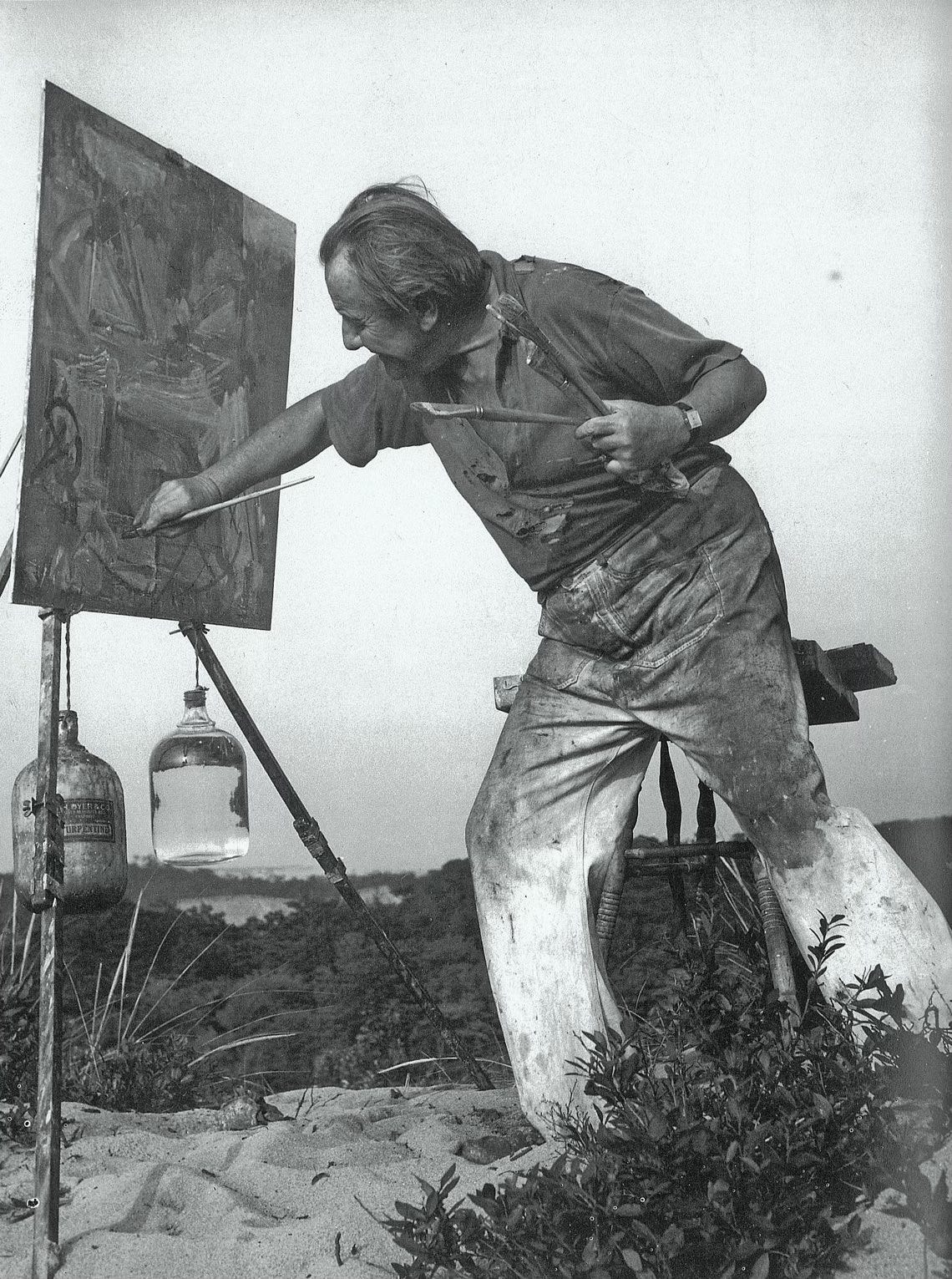
“Forms were put down and wiped away as the impulse of the drawing swung from side to side: a stroke shooting to the left was balanced by another to the right. He scraped off unwanted colors with a plaette knife; picked up one of the paint-soaked pieces of gauze that had accumulated on his palette table, wrung it out so that it was almost dry, dragged it across the coarse-grained duck for a dry-brush effect; dipped another piece into turpentine; and washed on a glaze. As the composition became more complex, the impasto was laid on more thickly, sometimes heightening a color, sometimes contradicting it. The artist picked up a thick gob of deep blue paint with a large brush held in his fist like a dagger; brought it down with force on an area of raw canvas, then on a pale blue rectangle; heavy streaks of white were drawn across a fresh layer of yellow; a brushful of red was plunged into an area of green—but, incredibly, working in thick, wet paint like this, he managed to keep his colors intact and separate.”
- Hans Hofmann Paints a Picture, 1950
On Franz Kline:
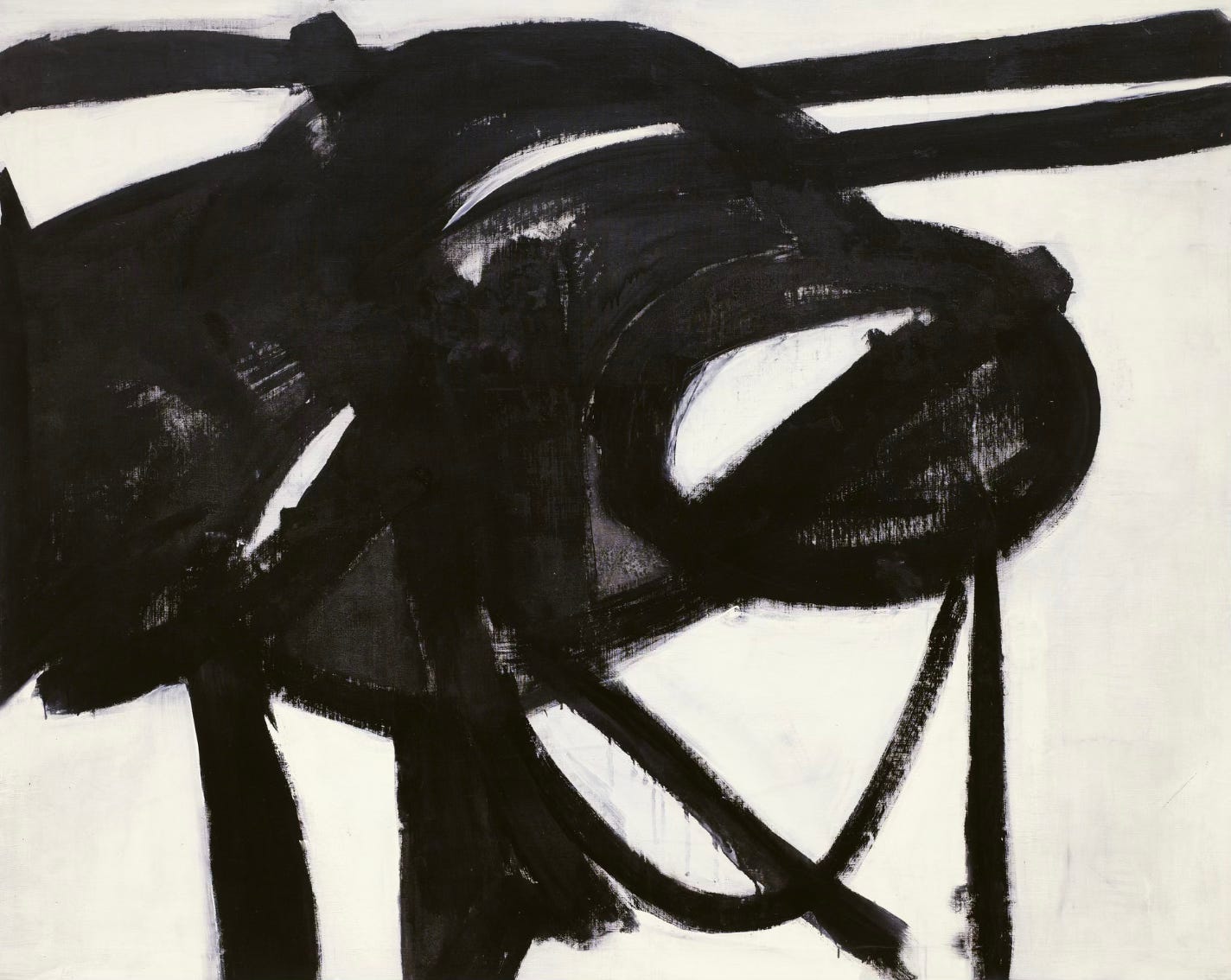
“The stream of Franz Kline’s observation was a matter of illuminated fragments, poignant facts, nuggets of insight. A festive man, committed to the moment he was living, ready to dance all night, the last to leave a part, Franz had a paradoxical loyalty to the past. The American rage to discard th e’obsolete’ was intolerable to him. He never abandoned an enthusiasm and there was no such thing as a passing fancy. Nostalgia played a curous and powerful role in his development. It was as though he proceeded in his life and in his art by looking backward.”
- Franz Kline: Painter of His Own Life, 1962
On watching Andrew Wyeth painting a study of That Gentleman:
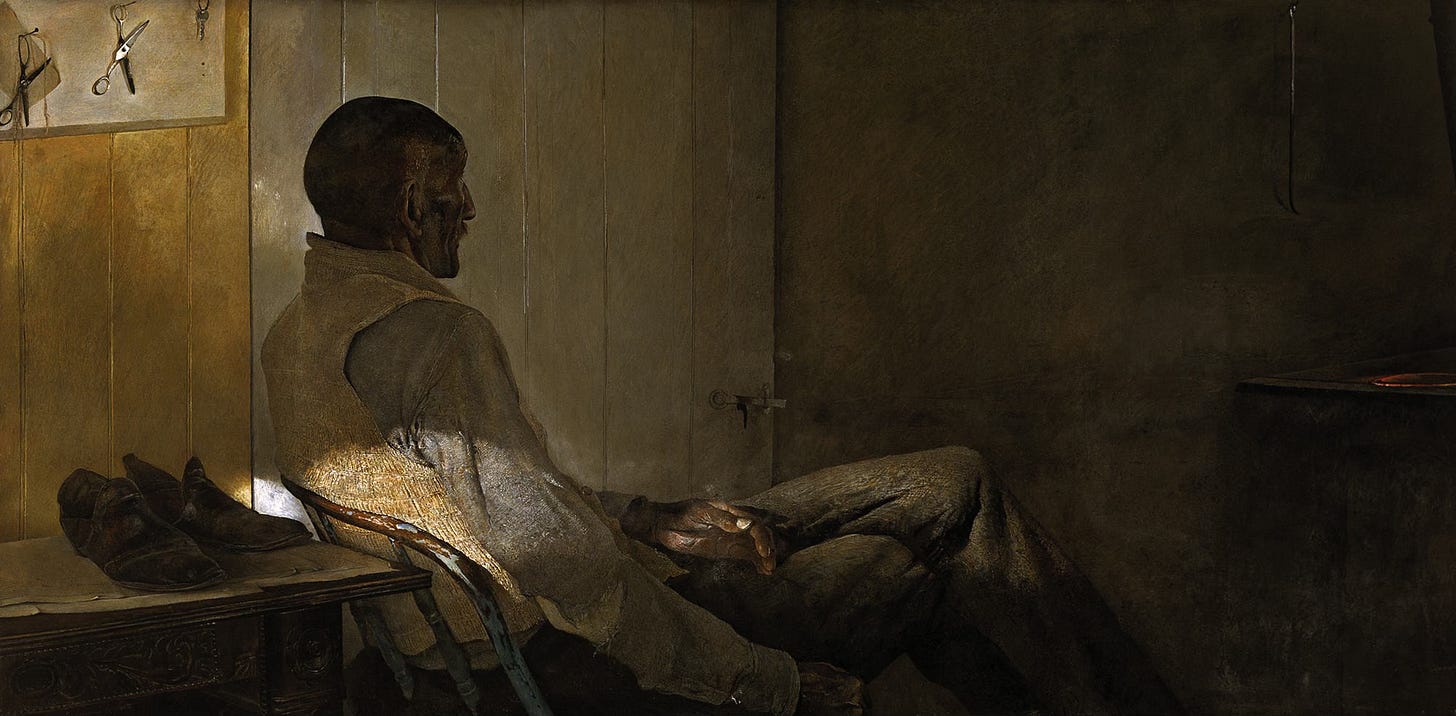
“Although muted in tone (‘I wanted everything to look dusty.’), much of the effect of the picture is carried in the peculiarly atmospheric color. A golden glow, rising from the ocher wall, suffuses the painting, reaching its highest pitch in the flesh around the lighted eye; subsiding to an ivory tone in the shirt on the left; imparting a dream-like insubstantiality to the body of the sitter as it comes forward in his vest.”
- Andrew Wyeth Paints a Picture, 1950
On skipping a party at Black Mountain College with her husband, artist Willem “Bill” de Kooning:
“‘I’m getting sick of crowds,’ Bill said one night at a particularly noisy gathering. ‘Let’s take a walk.’ After ten minutes on the moonlit road, none of the lights from the school were visible to interfere with the vast, heavy, velvety blackness of the sky, nor did sounds of laughter and music penetrate the almost terrifying hush. We stood still, enveloped by the awesome multiplicity of stars. ‘Let’s get back to the party,’ said Bill. ‘The universe gives me the creeps.’”
- de Kooning Memories, 1983
My Nostalgic 2011 MoMA Film Pics:


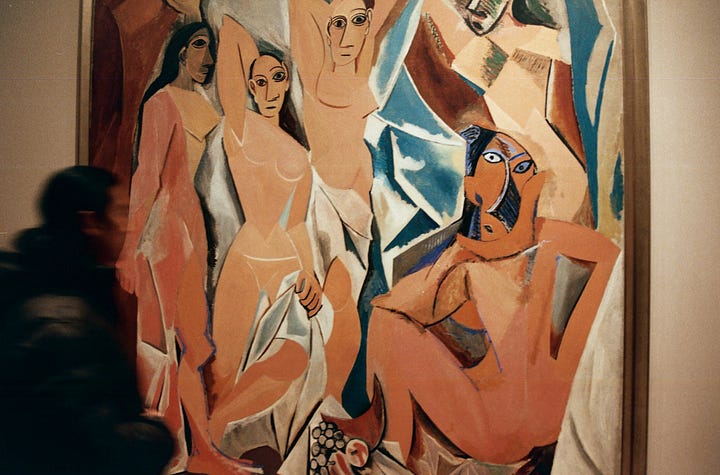





Evidence below that some people never change: I am still taking detail shots of modern painters’ signatures.
**
I hope you can stare at some Abstract Expressionist art this weekend!
Kelsey Rose





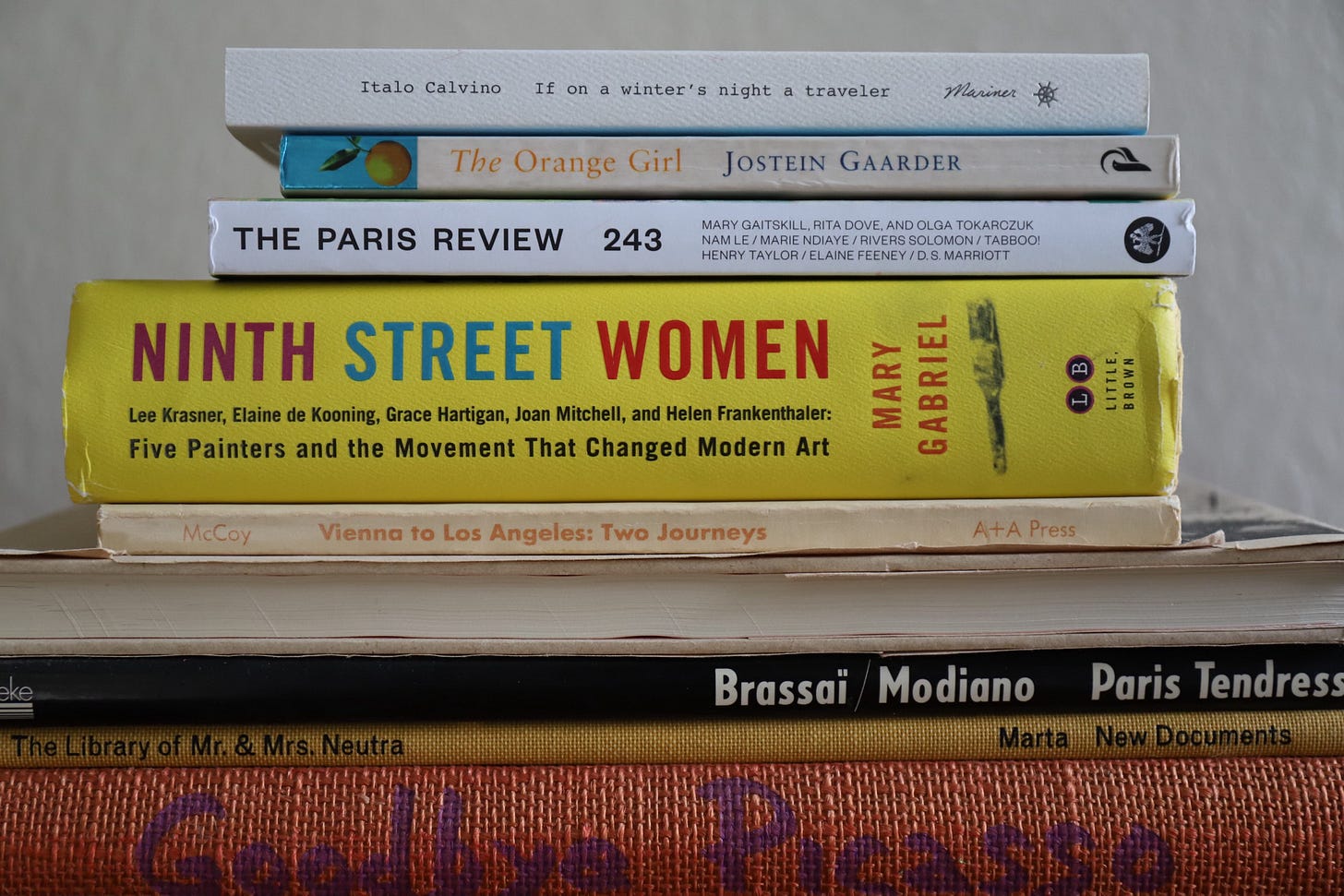

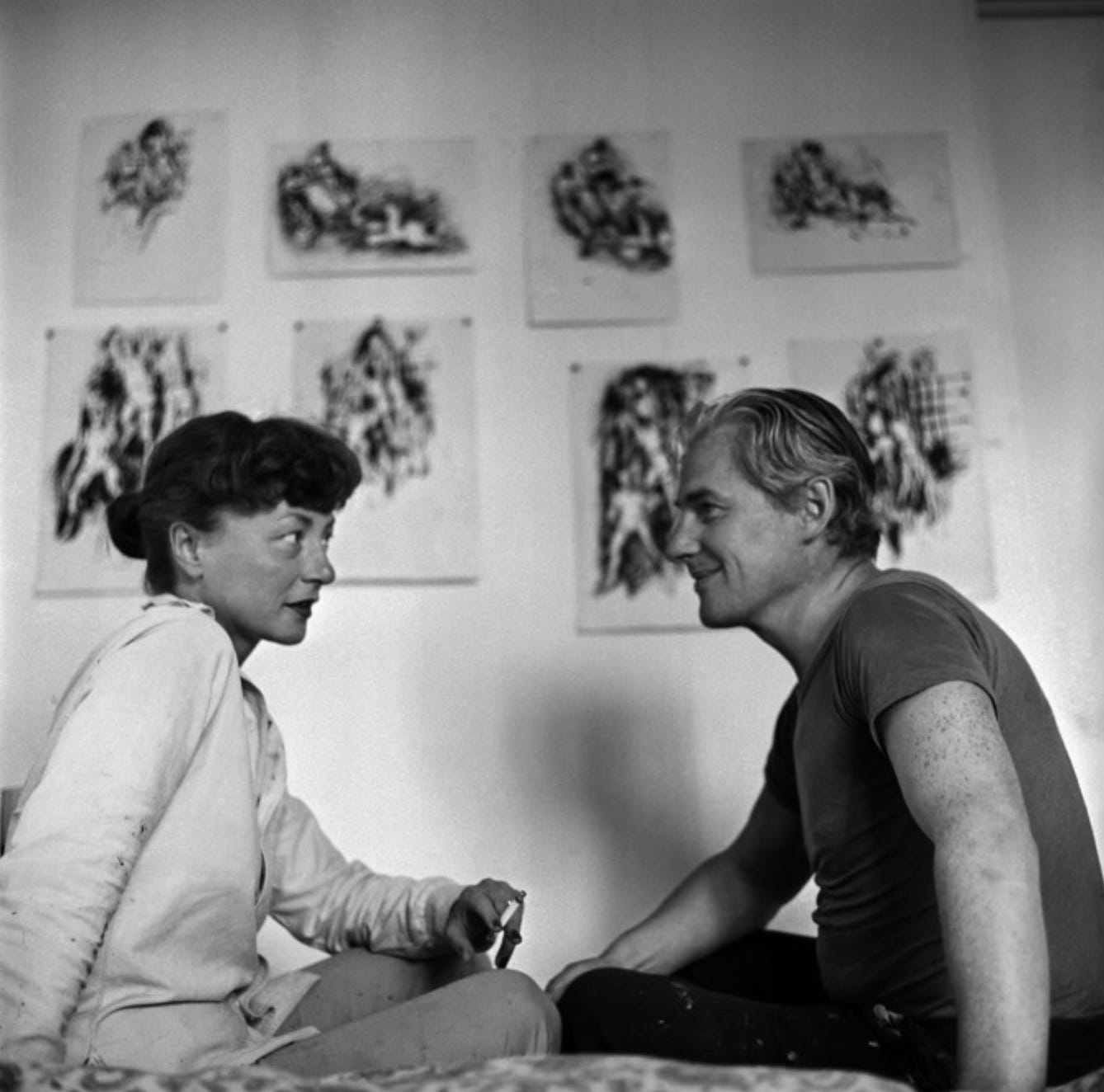
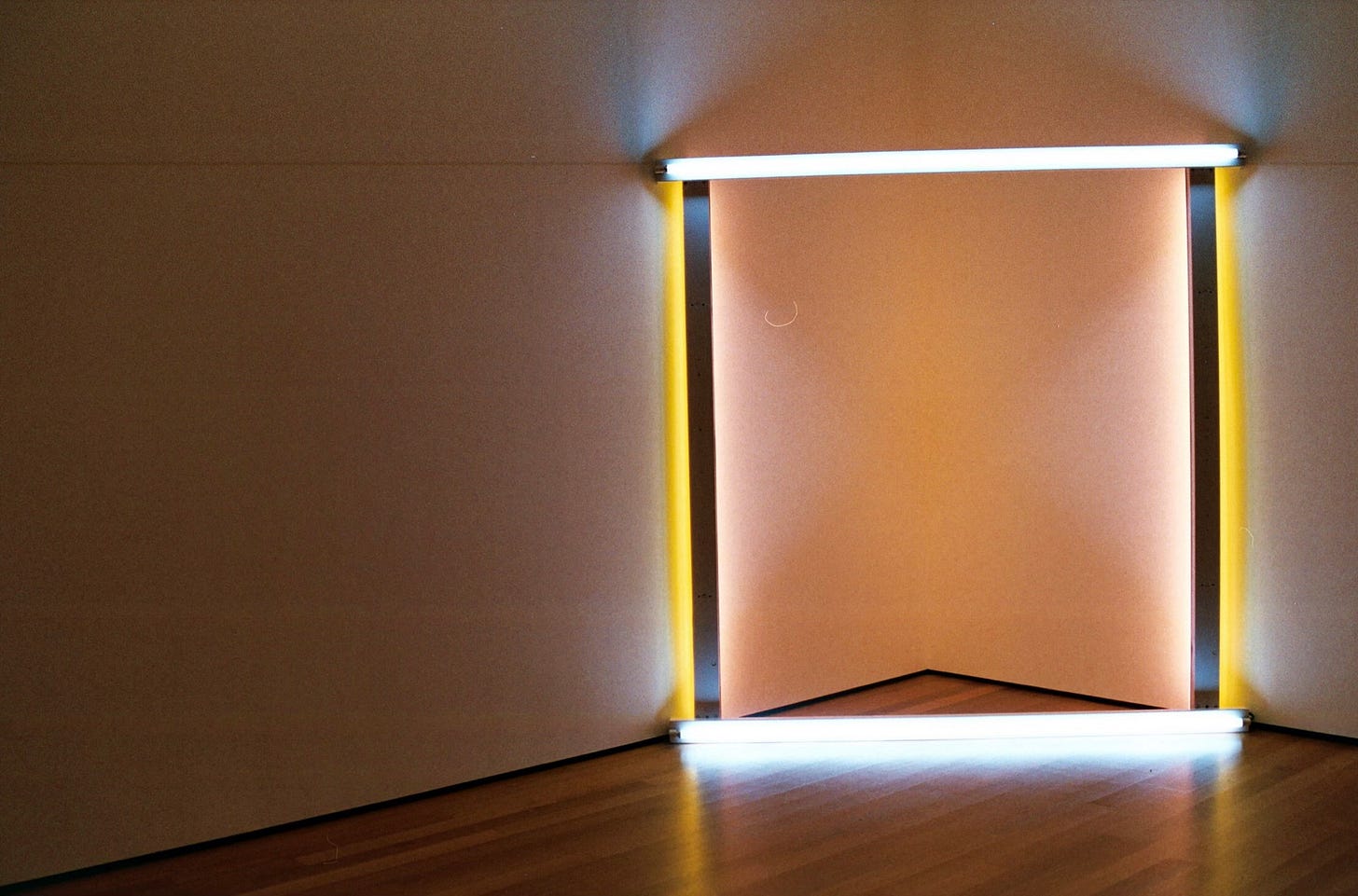
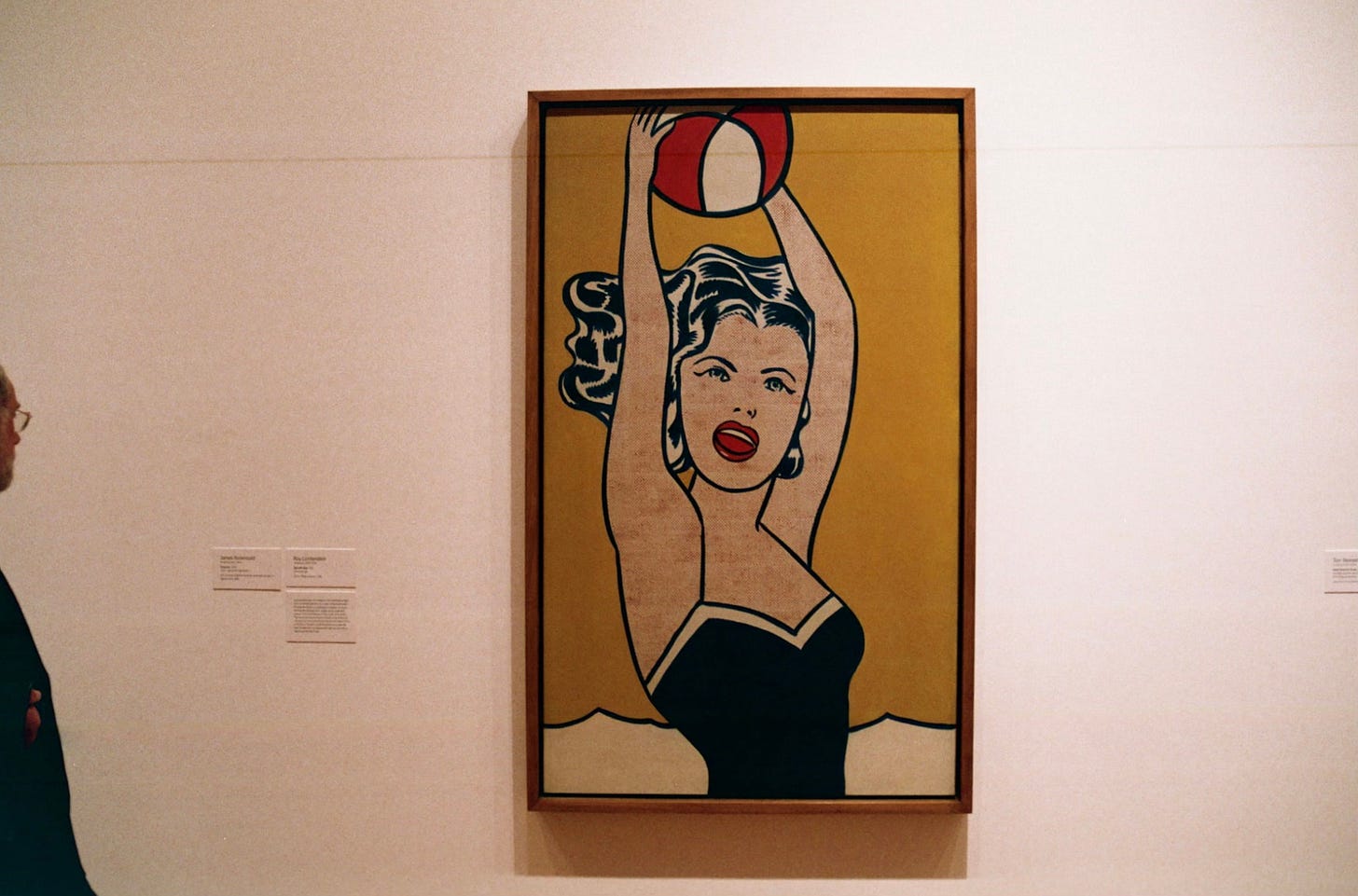
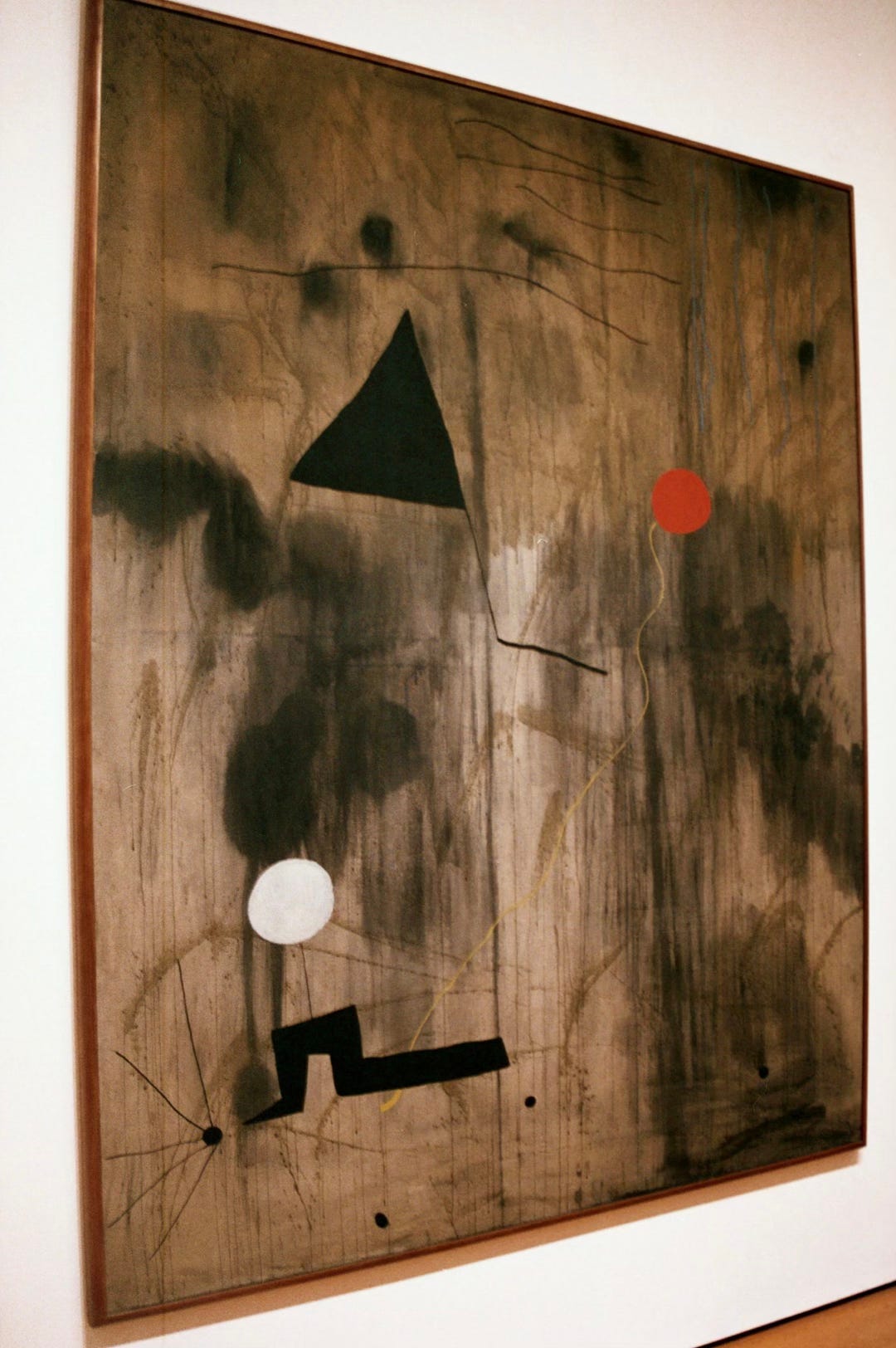

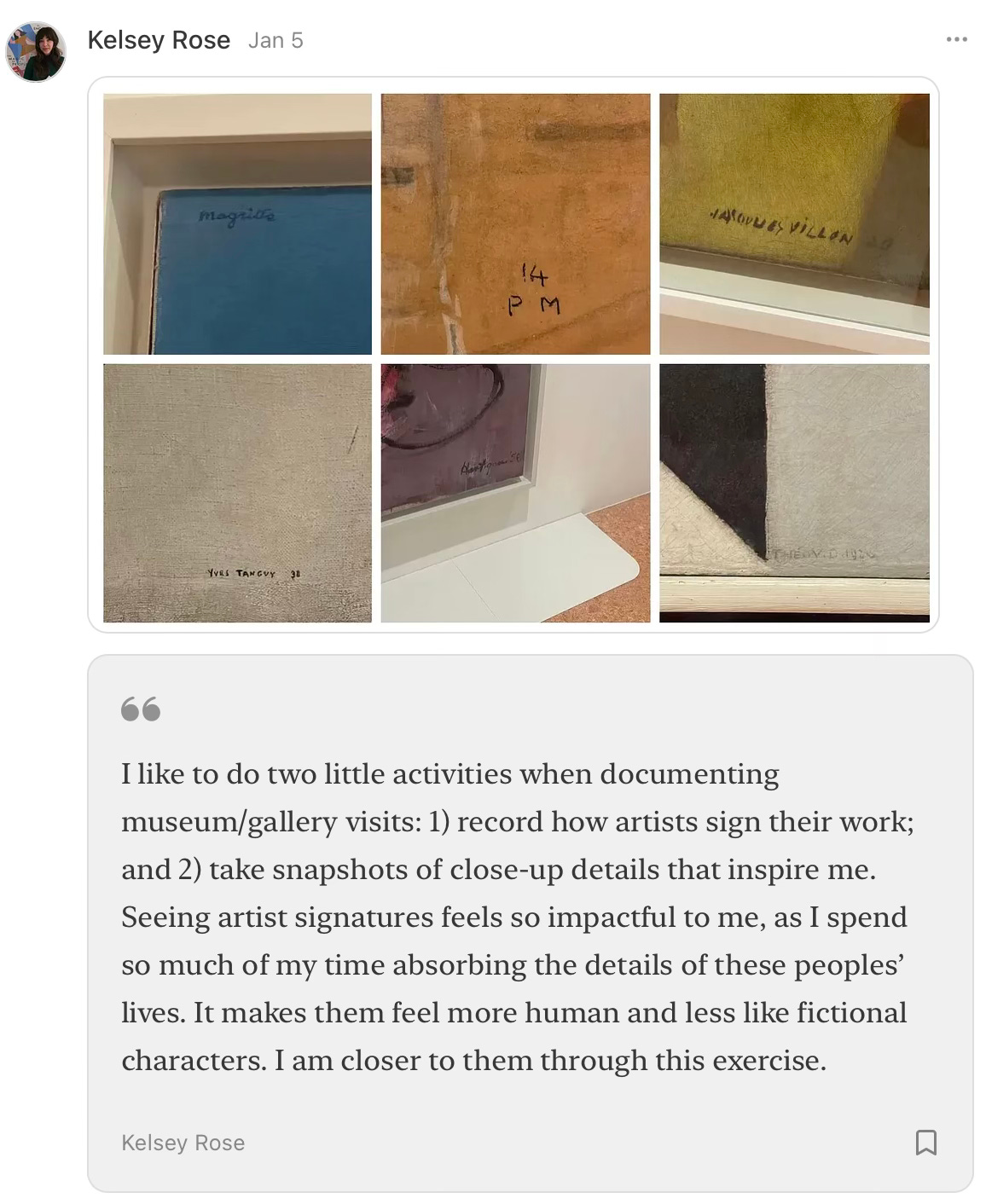
Wonderful, as always.
The de Kooning couple reminds me a bit of the Delaunays. Robert got more credit in his day, but Sonia's work has been getting well-deserved recognition now.